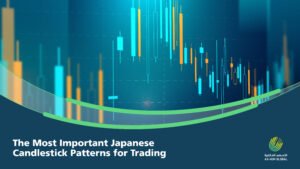Trading tools are essential elements that traders rely on in the foreign exchange (forex) market to make informed decisions and achieve sustainable profits. These tools provide precise analyses and valuable insights that help traders understand market dynamics and identify potential trends. In this article, we will cover three of the most important trading tools in the forex market: currency heat maps, currency volatility, and currency correlations.
1. Currency Heat Map
What is a Currency Heat Map?
A currency heat map is an analytical tool that displays the relative strength positions of major currency pairs compared to each other. This information is presented in the form of tables or matrices, where each cell is colored based on the strength of one currency pair relative to others. This tool helps traders get a general overview of the market's state across different timeframes.
Benefits of Using a Currency Heat Map
- Comprehensive Market Overview: It offers a quick snapshot of the performance of all major currency pairs simultaneously, helping to identify overall market trends.
- Identifying Strong and Weak Currency Pairs: Traders can easily determine which currency pairs are showing greater relative strength or weakness, aiding in more accurate trading decisions.
- Multi-Timeframe Analysis: The heat map allows users to monitor currency performance across different timeframes, providing a deeper understanding of market movements over short and long periods.
How to Use a Currency Heat Map
- Select Currency Pairs: Start by selecting the currency pairs you want to monitor, whether they are major, exotic, or cross pairs.
- Choose a Timeframe: You can choose the timeframe that suits your trading strategy, such as hourly, daily, weekly, or monthly.
- Analyze the Results: After displaying the heat map, analyze the colors and indicators to identify strong and weak currencies and make trading decisions based on that.
2. Currency Volatility
What is Currency Volatility?
Currency volatility refers to how much the price of a specific currency changes relative to another currency over a given period. A volatility calculator is one of the important tools that helps traders measure the volatility of major, exotic, and cross-currency pairs.
The Importance of Measuring Currency Volatility
- Risk Assessment: It helps traders evaluate the risk associated with trading a particular currency pair.
- Selecting Trading Strategies: Based on the level of volatility, traders can choose suitable trading strategies, such as scalping or long-term trading.
- Capital Management: Understanding market volatility helps determine the appropriate risk level for each trade, thus protecting capital from large losses.
How to Calculate Currency Volatility
The volatility calculator tool relies on the daily relative and point changes in the currency pair, depending on the selected timeframe. Users can choose the timeframe by entering the required number of weeks, and the tool will then calculate the average volatility during that period.
Applications of Currency Volatility in Trading
- Risk Analysis: It helps assess the stability of a currency and make trading decisions based on that.
- Profit Opportunities: In highly volatile markets, significant profits can be made from quick price movements.
- Portfolio Diversification: By understanding the volatility of different currencies, traders can diversify their portfolios to reduce overall risk.
3. Currency Correlations
What are Currency Correlations?
Currency correlations refer to the relationship between the movements of one currency pair and others. A currency correlation tool shows how pairs of major, exotic, and cross-currency pairs are interrelated, helping traders understand market dynamics more thoroughly.
The Importance of Analyzing Currency Correlations
- Risk Management: Knowing correlations helps avoid a portfolio with overly similar positions, thereby reducing risk.
- Identifying Trading Opportunities: Correlations can be used to identify pairs that move in the same direction or the opposite, providing opportunities to profit from synchronized or inverse movements.
- Diversifying Investments: Understanding correlations aids in effectively diversifying investments, increasing the chances of achieving stable returns.
How to Use a Currency Correlation Tool
- Select Currency Pairs: Users can select major, exotic, or cross-currency pairs they wish to analyze for correlations.
- Choose Timeframes and Periods: The appropriate timeframe (such as daily, weekly, or monthly) and the number of periods for analysis must be selected.
- Analyze the Results: After displaying the correlations, traders can identify pairs that move together or inversely to make informed trading decisions.
Examples of Using Currency Correlations
- Hedging: If you have a position in a certain currency pair and notice another pair is negatively correlated, you can open an opposite position to hedge your risk.
- Predicting Future Movements: Understanding correlations can help predict currency movements based on the performance of related currencies.
Conclusion
Trading tools such as the currency heat map, currency volatility, and currency correlations are vital tools that every forex trader should master. These tools provide deep insights and valuable information that help in making informed trading decisions, managing risks efficiently, and increasing profit opportunities. By understanding and effectively using these tools, traders can enhance their trading strategies and achieve greater success in the ever-changing and volatile foreign exchange market.


